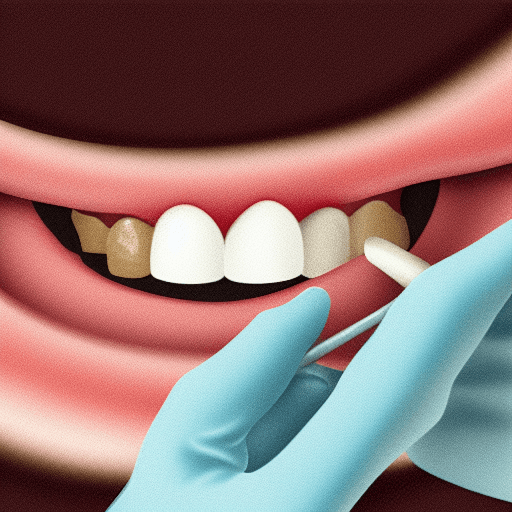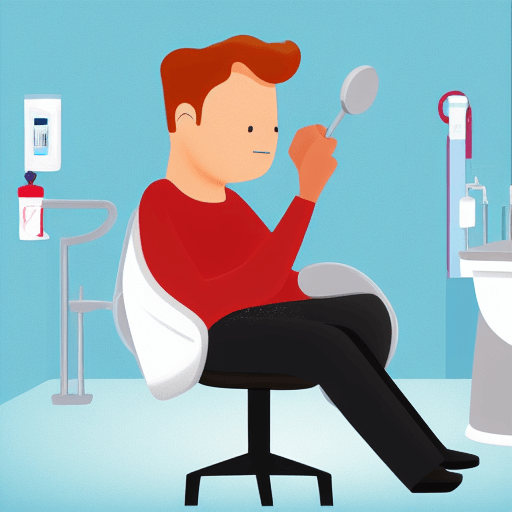Salt water rinse after tooth extraction: how long?
If you’re about to have a tooth extracted, how long should you wait until starting a saltwater rinse routine, and how long to do them for?
A salt water rinse is an important part of the healing process, and it’s important to know how long you should keep it up.
Let’s discuss the benefits of salt water rinses and how long you should continue doing them after having a tooth extracted!

It is typically recommended to do a salt water rinse after tooth extraction for at least a 24-72-hour period. The saltwater rinse can help clean the area around the extraction site and reduce the risk of infection.
Salt water rinse after tooth extraction: How long?
Most dental professionals recommend that patients rinse with salt water for at least 3 days after their extraction.
8 tips for doing salt water rinses after a tooth extraction:
- Start doing the salt water rinses the day after the extraction. Rinsing too soon can disrupt the blood clot that forms in the socket.
- Use 1/2 teaspoon of salt dissolved in a cup of warm water. The saltwater solution should taste salty but not overly so.
- Gently swish the salt water around the extraction site and spit it out. Do not swish vigorously as this can dislodge the blood clot.
- Rinse 4-5 times a day, especially after eating or drinking anything other than water. Rinsing helps keep food debris out of the socket.
- Continue doing salt water rinses for 5-7 days after the extraction or until the socket feels mostly healed.
- You may experience some mild bleeding when rinsing at first. This is normal and should lessen within a couple days. If heavy bleeding persists, bite on a gauze pad or tea bag for 30-60 minutes.
- Salt water rinses promote healing by cleaning out debris and food particles. They also reduce inflammation and speed up the closure of the extraction site.
- Be patient during the healing process. It takes several weeks for the socket to fully close after a tooth extraction. The salt rinses will help make this period more comfortable.
Proper aftercare helps ensure the extraction site heals cleanly.
Explain It To A Child
Rinsing salt water in your mouth after tooth extraction helps to reduce swelling and speed up the healing process. The salt helps to draw out fluid while the water washes away bacteria and food particles.
This will help to remove any residual bacteria and debris from the site.
How many times should you rinse salt water after tooth extraction?
It’s important to rinse your mouth with salt water three times a day for the first week after you have a tooth extracted and for about 30 seconds in length each time.
To make a saltwater rinse, add 1/2 teaspoon of salt to a cup of warm water and stir until the salt dissolves.
Spit the rinse out after swishing it around your mouth for at least 30 seconds.
- The purpose of rinsing is to remove food particles and plaque from the extraction site so that it can heal properly.
- Rinsing also reduces pain and swelling by removing bacteria from your mouth.
- Do not brush your teeth directly next to the extraction site for at least 24 hours. After that, you can resume your normal dental hygiene habits.
- Be sure to use a soft-bristled toothbrush and toothpaste to avoid irritating the extraction site.
If you have any questions or concerns about caring for your mouth after an extraction, be sure to ask your dentist or oral surgeon.
What is a saltwater rinse and what are its benefits after tooth extraction
A saltwater rinse is a mouthwash made with warm water and dissolved salt.

It is often used after tooth extraction or other dental procedures to cleanse the mouth and speed up healing.
There are many benefits to using a saltwater rinse, including reducing swelling, promoting healing, and preventing infection.
- Saltwater is a natural antiseptic and can help to remove debris and bacteria from the mouth.
- It also helps to reduce inflammation and swelling.
- In addition, saltwater rinses can promote the formation of new blood vessels and tissue, which speeds up the healing process.
- Finally, saltwater rinses can prevent infection by keeping the area around the extraction site clean.
For best results, it is important to use a sterile solution and rinse for at least 30 seconds after each teeth brushing.
Does swishing salt water in your mouth help after tooth extraction?

Swishing salt water in your mouth can help to speed up the healing process after tooth extraction.
The salt helps to draw out fluid and reduce swelling, while the water rinses away bacteria and food particles.
- For best results, use warm salt water and swish for at least 30 seconds. Be sure to spit the water out after each swish.
- Repeat this process several times a day, or as directed by your dentist.
In most cases, the healing process should take about 2-4 days. However, if you experience any pain, bleeding, or other problems, be sure to contact your dentist right away.
How to rinse with salt water after tooth extraction

It is important to rinse with salt water after a tooth extraction to clean the area and help speed up the healing process.
- Start by mixing one teaspoon of salt with eight ounces of warm water.
- Gently swirl the solution around your mouth for at least 30 seconds, being careful not to touch the extraction site.
- Spit the salt water out and repeat as necessary. You can do this several times a day until the area has healed.
In addition to rinsing with salt water, it is also important to keep the extraction site clean and dry.
Be sure to brush and floss your teeth regularly, and avoid smoking or using straws, which can cause additional irritation. With proper care, your extraction site should heal within a week or two.
In most cases, a few days of rinsing is all that is needed to promote healing and prevent infection.
Article Sources
Jacks of Science sources the most authoritative, trustworthy, and highly recognized institutions for our article research. Learn more about our Editorial Teams process and diligence in verifying the accuracy of every article we publish.
